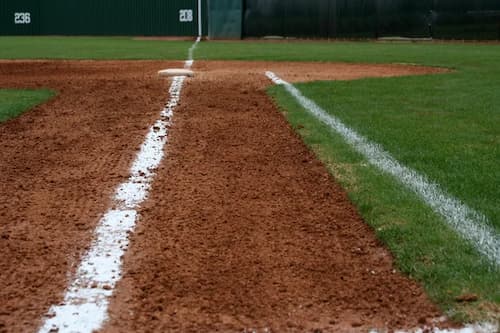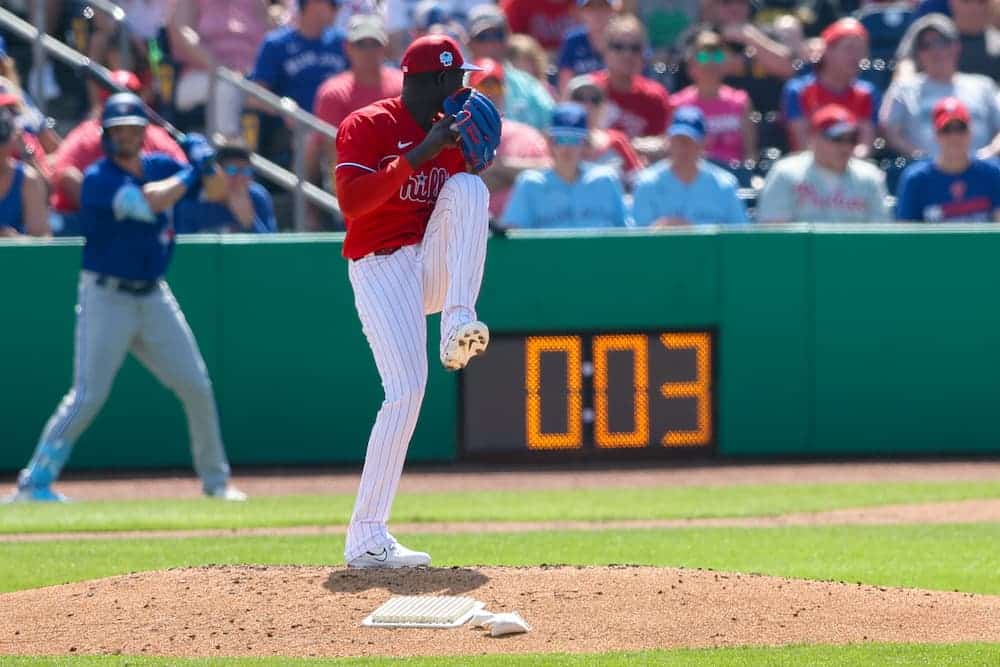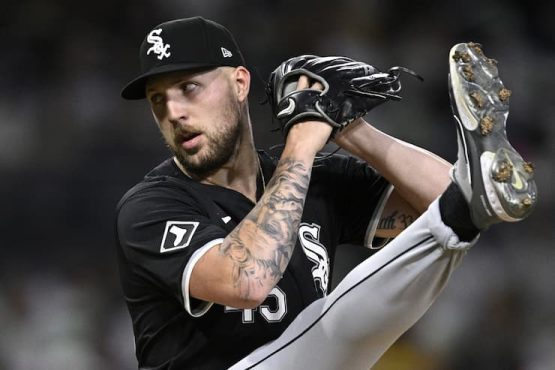Major League Baseball’s Competition Committee has announced a series of rule changes to be implemented beginning with 2024 Cactus and Grapefruit League games. The most notable change for the 2024 season has to do with the basepath. Hear that sound? That’s baseball purists having a conniption before even hearing about the rule change.
Don’t worry old timers, it’s nothing major!
The MLB Competition Committee unanimously approved the “widening” of the runner’s lane from home plate to first base. The “runner’s lane” will now extend from the foul line to the edge of the infield grass. There will still be a marked lane to the right side of the line, however a runner will be deemed “in compliance” as long as they’re on the infield dirt heading to first base. The rule change should be particularly helpful for right-handed batters.

See boomers, nothing too bad!
Now, on to the other rules.
In an effort to speed up the pace of play, which has been a point of emphasis for Major League Baseball since last season, adjustments have been made to the following rules:
- Pitch Clock
- Mound Visits
- Pitcher’s Warming Up
Here’s the breakdown of each rule change:
Changes to MLB’s Pitch Clock
The most controversial rule prior to the 2023 MLB season proved to be Major League Baseball’s most successful. The pitch clock, which was universally panned when it was announced, received rave reviews from fans, media, and even some players. Heck, Phillies’ starting pitcher Aaron Nola even adjusted to the pitch clock by the end of the season! The introduction of the 20-second pitching clock reduced the average length of game to right around 2:40 a game in 2023. That’s down from 3-hours plus in 2022, according to Statista.com.
With the goal of speeding up the game just a smidge, the MLB Competition Committee has changed the pitch clock from 20-seconds to 18-seconds when a base is occupied. Pitchers will still have 15-seconds when there is no one on base. Pitchers and batters will still be allotted two “time outs” per at-bat.
Analysis: Perfect! The pitch clock might be the best thing to happen to baseball since the 1998 home run race. Going to a game is no longer a drag. It will be interesting to see how Orioles’ relief pitcher Craig Kimbrel handles the two-second reduction. Get ready, Baltimore!
Circumvention of the Pitch Clock
Pitchers are a crafty bunch, aren’t they? In an effort to circumvent pitch clock rules, pitchers began to walk around the mound after receiving the ball during the 2023 season. The 2023 pitch clock rule stated the clock wouldn’t start until the pitcher was on the rubber, hence the walk around the park. In 2024, the clock will begin as soon as the pitcher has the ball and play is deemed ready to resume.
Analysis: This was bound to happen! Pitchers, rightfully so, found the loophole in the rule and exploited it. Now, baseball is pushing back. It will be fun to see how the cat and mouse game regarding this part of the rule evolves.
Changes to Mound Visits
Mound visits, which were capped at five per game in 2023, have been reduced to four mound visits per game for 2024. The average mound visit per game in 2023 was 2.3, according to Major League Baseball. The mound visit was also considered the fans’ least favorite event, according to MLB polling. Another caveat to the 2024 rule, a defensive player can signal to an umpire to “buy” a mound visit versus forcing a coach to come out and take the field. This change is designed when a pitcher needs additional time. Think of it as an additional “time out” for the pitcher.
Analysis: The backend of this rule, where a defensive player can ask for a mound visit without a visit actually occurring, has potential to be problematic. Smart teams will figure out how to take advantage of the situation and use this loophole to prevent a violation. As far as the reduction from five visits to four visits: meh. It doesn’t make that much of a difference.
Changes to Number of Batters Faced by a Pitcher…sort of
Beginning in 2024, a pitcher that is sent out to start an inning must face at least one batter in addition to the previously instituted three-batter minimum. Apparently, this was a thing in 2023, teams would send out a pitcher and delay the inning by upwards of three minutes. This occurred 24-times in 2023 according to MLB’s data, including twice in the 2023 World Series.
Also added to warm up rules, if a new pitcher steps onto the warning track with less than two-minutes remaining in between innings the clock will reset to 2:00. Additionally, broadcast partners will only be guaranteed two-minutes of commercial time in between each inning.
Analysis: I had no idea this was a thing! Broadcast likely won’t be too happy about having to cram in two-minutes worth of commercials versus a potential four-plus minutes.
Add The Sports Daily to your Google News Feed!







